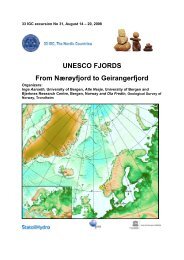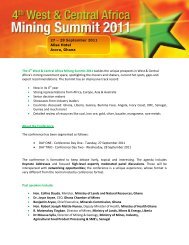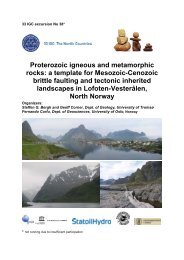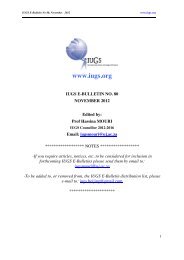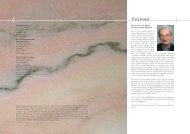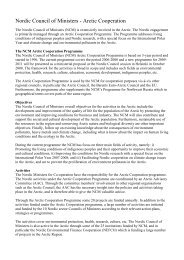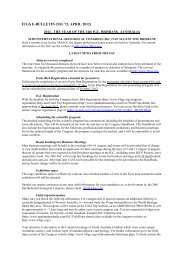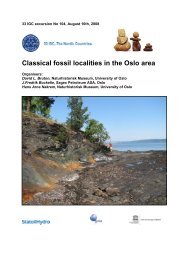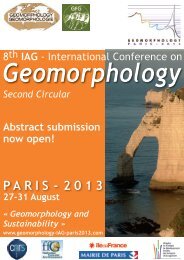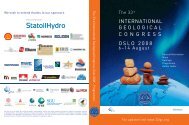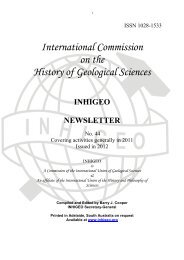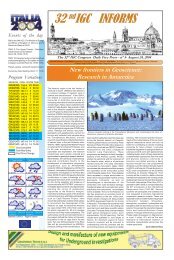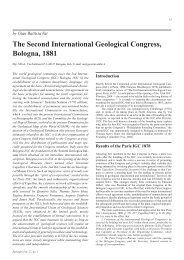Create successful ePaper yourself
Turn your PDF publications into a flip-book with our unique Google optimized e-Paper software.
map (Fig. 2.2). The alkaline rocks forming the Lovozero massif are represented mainly by<br />
plutonic and less abundant subvolcanic and volcanic magma products. The plutonic<br />
derivatives can be grouped into the following principal components: 1). Poikilitic feldspathoid<br />
syenites; 2). Lujavrite-foyaite-urtite layered complex; 3). Eudialite nepheline syenite complex<br />
(Arzamastsev, 2002).<br />
The Lovozero massif is rich in landforms resulted from the glacial activity and displaying<br />
both long-term glacial-erosion features and smaller scale landforms, which in great detail<br />
record the process of the deglaciation of the area. Figure 1.2 shows main glacialgeomorphology<br />
features of the Khibiny and Lovozero Mountains: glacial cirques, glacial<br />
lineated forms (drumlins, flutings), marginal moraines, end moraines, hummocky moraines,<br />
De Geer moraines, lateral meltwater channels, spillways, eskers, delta formations, icedammed<br />
ake shoreline, tors.<br />
The main valleys are U-shaped with rivers and elongated lakes. The largest valleys are<br />
situated in the eastern (Chinglusuai, Chivruai, Seyd'iavriok Rivers with the tributaries and<br />
Seydozero Lake), northern (headstreams of Sergevan' River system) and western (Kitkuaiv,<br />
Tavajok, Sengisjok Rivers) parts of the massif.<br />
The main feature of the massif is that in late glacial when the glacier frontier was to the east<br />
of the massif, the most high summits were the nunataks. At time the frontier moved to the<br />
west of the massif, the local glaciers formed in the most of large cirques.<br />
U m b o z e r o l a k e<br />
Mt. Alluaiv<br />
16<br />
0 2 4 6 8 10 km<br />
Mt. Sengischorr<br />
Mt. Parguaiv<br />
Quaternary moraine<br />
Foyaite, foyaite-lujavrite<br />
Mt. Karnasurt<br />
Eudialite lujavrite, lovozeritemurmanite<br />
and porphyric lujavrite<br />
Ijolite with apatite and titanite<br />
Mt. Strashempahk<br />
Rhythmic lujavrite, foyaite, urtite<br />
layered sequence with loparite-bearing<br />
layers<br />
Mt. Selsurt<br />
Mt. Kuivchorr<br />
Seidozero lake<br />
Mt.Vavnbed<br />
Mt. Punkaruaiv<br />
Poikilitic nepheline-sodalite syenite<br />
Pegmatoid foyaite, lujavrite and<br />
alkaline syenite of the contact zone<br />
Phonolite porphyres, syenite porphyres<br />
Augite porphyres, alkaline picrites<br />
Precambrian basement<br />
Fig. 2.2. Geological map of the Lovozero massif (after Arzamastsev, 2002).<br />
L o v o z e r o l a k e



